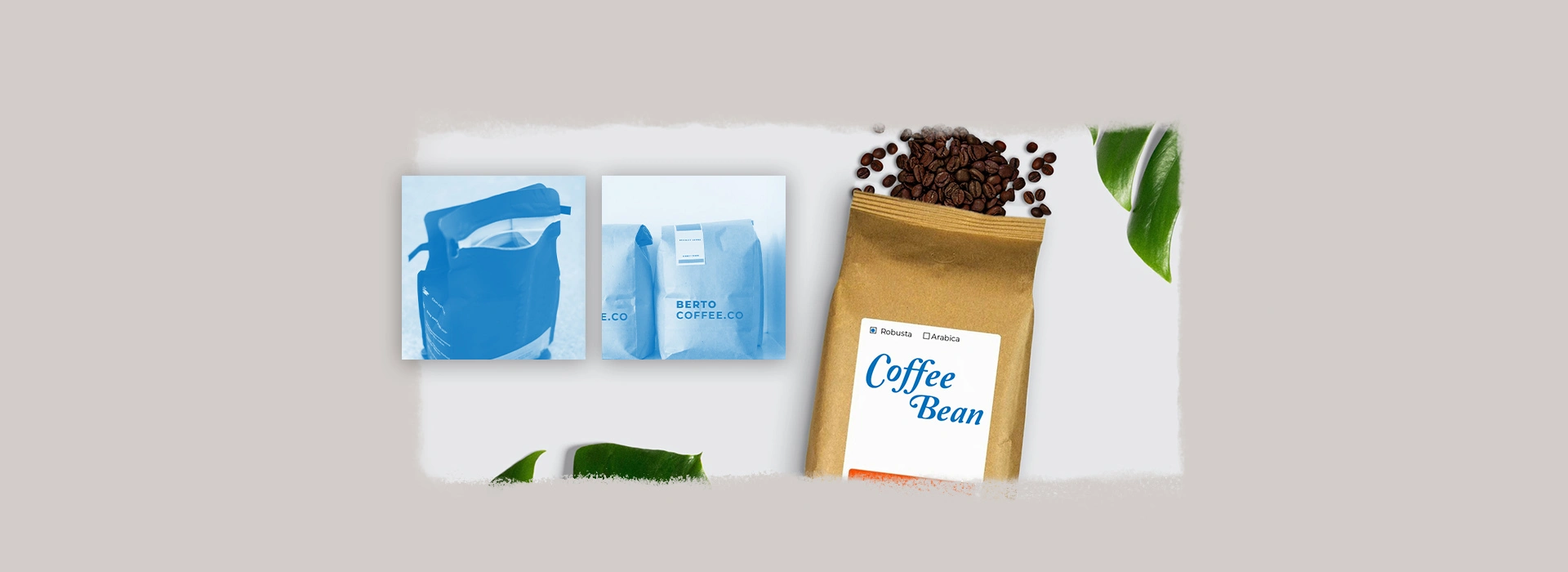Designing the Perfect Coffee Packaging
Coffee is one of the most widely consumed beverages in the world with around 166.63 million 60 kilogram bags of coffee were consumed worldwide in 2020/2021. The number of coffee roasters are also on the rise, making the market for coffee roasters a highly competitive one. One of the keys to stand apart from your competitors is the coffee bean packaging. In this post, we will break down what makes a good coffee packaging and share tips on good packaging designs.
Why packaging matters
The packaging does a lot more than just protecting the roasted coffee beans and keeping them fresh while being transported out of the roaster machine to the customer’s hand. Coffee packaging with a great design stands out from the crowd, attracts new customers and retains existing ones, and also helps increase brand awareness. Your packaging should also be appealing to your customers and tell a compelling story of your business. In order to achieve all these goals, the packaging should be attractive, informative, and ideally made from sustainable materials. In a nutshell, a great packaging should balance protective features and customer appeal.
What makes good coffee packaging?
First impressions do count. When customers shop online or in a shop, they don’t know what the coffee tastes like, so they are more likely to make the decision based on the bag design and the available information on it. Here are a few things to consider before designing your roasted coffee bean packaging:
1. Packaging material
Different packaging materials have different appearance, texture, durability, feel to the touch, and how the printing will look. Choose a material that aligns with your audience and brand value, for example an eco-friendly material to convey that your business strives towards caring for the environment.
2. Packaging type
There are several options for the packaging type, such as side-fold pouches, quad-seal bags, flat-bottom bags, stand-up pouches etc. Choose one that works best with your roasted coffee beans.
3. How the roasted beans stay fresh
There are features you can choose to maintain the quality of your roasted coffee beans inside the packaging, such as one-way degassing valve, resealable top, or modified atmosphere packaging.
4. Label design
Use fonts and colors that work with your packaging size, material, and type. Be creative and use add-on features such as a clear window, a sleeve or a collectible card slots to make your product stand out.
5. Label content
Include useful information in the label, such as type of roast, flavor profile, coffee bean origin and also the story of your brand. Also, put interesting bits like the farmers you work with, the sustainable efforts you have done to produce the roasted beans, to further connect with your customers and increase their brand loyalty.

Tips on designing good coffee packaging
More often than not, your coffee bag design is one of the most meaningful interactions a customer can have with your brand. Hence, it is imperative for a coffee roastery to design a coffee packaging that conveys all the right messages. Some things to keep in mind when designing your coffee packaging:
1. Keep it consistent
Keep the coffee packaging design as a part of your overall branding. Do a consistent design theme throughout different coffee bean varieties, and also with other products or if you also have a coffee shop.
3. Make sure your design stand out
While the taste and quality of your coffee are important, you need to make sure your customers can easily find your brand in the midst of the other brands. This is why having an eye-catching design can help customers to discover your product.
4. Use color psychology
Specific colors can bring up emotional reactions to the customers, so it makes sense to use colors that can influence your customers’ buying preference. For example, red is known for passion, blue for trust, gold for luxury.
5. Typography is key
Strong, attractive typographic elements attract the customers’ attention. The fonts used in the packaging are an integral part of the whole label design, so choose a strong font or combine two types of fonts to give additional flair.
6. Don’t forget about sustainability
Designing coffee packaging that leaves less carbon footprints should be the goal for every coffee roaster, particularly with Millenials and Gen Z customers dominating the beverage market and demanding ethics and transparency from the products they consume. In addition to using eco-friendly materials, also provide brief information on how to dispose the bags properly or mention the importance of recycling.
With the ever-increasing competition for coffee roasters, it means the demand for attractive coffee packaging is also on the rise. A great packaging protects the quality of the coffee beans, tells the story of your brand, stands out from competitors and ultimately convinces your customers to buy the roasted beans. It is essential to work with a professional designer to help you achieve these goals. Choose a designer that shares your values and passion for coffee, and one that you can communicate openly with. Let your packaging be the vehicle that helps launch your business to great new heights.

